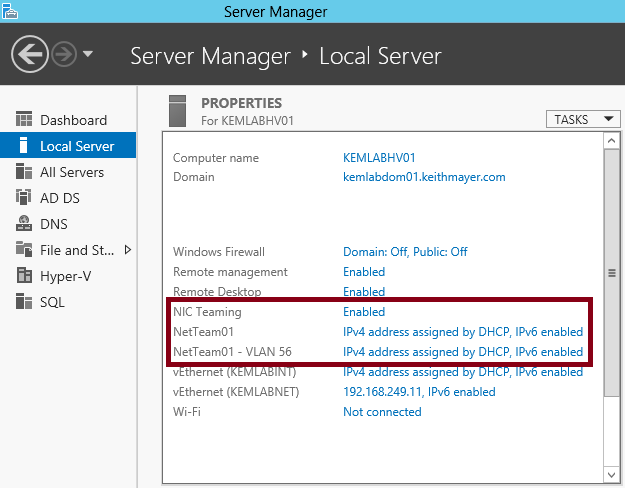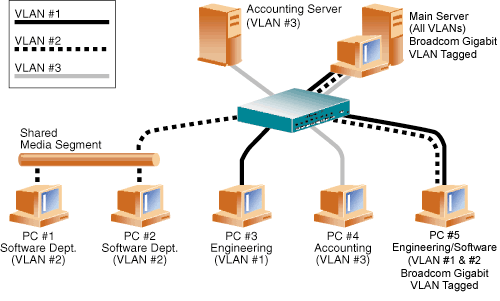- Vlan Tagging Windows 10
- Windows Server 2008 Vlan Tagging
- Windows Server Vlan Tagging Commands
- Windows Server Vlan Tagging Server
In order to take advantage of the full capabilities of LAN segmentation (VLAN), you need to properly configure a DHCP server with different scopes (multiscope setup). Windows Server offers a simple solution to the problem and we are going to see how to perform the operation.
Before starting, it’s important to say you need a configured layer-3 switch with multiple VLANs (check this tutorial for further information). Following these steps you’ll be able to automatically assign VLAN-aware IP addresses to the devices connected at the physical ports of the switch. The switch will also need to forward DHCP requests to the Windows Server.
Windows has no built-in support mechanisms for VLANs. There aren’t separate physical and VLAN interfaces you can capture from, unless a specialised driver that adds such support is present. So whether you see VLAN tags in Wireshark or not will depend on the network adapter you have and on what its and its driver do with VLAN tags. Settings are separate and can be different or identical. The VLAN tag on the parent and child must be the same if you want the partitions to be able to communicate through that VLAN. For more information, see Microsoft Hyper-V virtual NICs on teams and VLANs in the adapter user guide. Windows Server 2012. NIC teaming. Windows rras VPN vlan tagging: Freshly Published 2020 Advice several Windows rras VPN vlan tagging use tunneling protocols without encryption for protecting the privacy. SSTP (Secure Socket Tunneling Protocol): SSTP is a Microsoft protocol with native support on Windows Vista and later versions. Setting up VLAN and Teaming on Server 2012, 2012R2 and 2016. Setting up VLAN and Teaming on Server 2012, 2012R2 and 2016.
Vlan Tagging Windows 10
The first step is to install the DHCP server role:
Then open the DHCP management panel:
Right-click on IPv4 and select New Scope, a Wizard will start:
Click Next:
Give a name to the scope:
Specify the range of IP addresses that will be assigned by the scope. Note, we are configuring a scope for the VLAN 10 (IP range 192.168.1.xyz):
You can add exclusions to the range of IPs:
Default lease duration settings are fine:
Choose Yes:

Windows Server 2008 Vlan Tagging
Add the gateway IP address of the VLAN (important to identify the VLAN):
Specify the DNS servers:

You don’t need to specify a WINS server:
Choose Yes:
You’re ready to go!
Windows Server Vlan Tagging Commands
The scope will appear in the panel.
Windows Server Vlan Tagging Server
Of course you need to repeat the operation for every VLAN you want to manage through DHCP.
Related articles:
How to segment a LAN into VLANs with affordable hardware
How to manage VLANs and virtual switches on ESXi/vSphere
